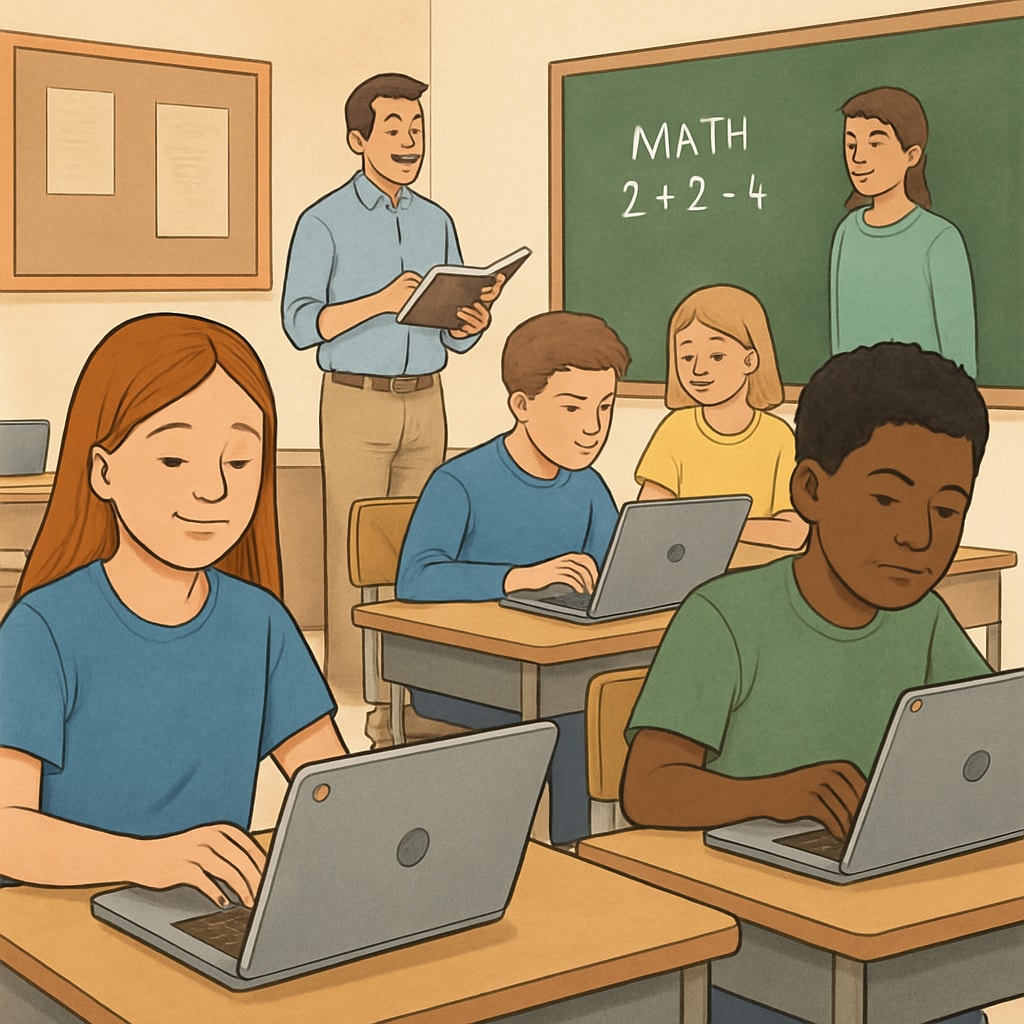As education technology like Chromebooks becomes a cornerstone of K-12 classrooms, it undeniably enhances efficiency by streamlining instruction and assessment processes. However, this reliance on tech-driven tools has sparked a philosophical debate about its broader implications for critical thinking and students’ ability to independently explore ideas. While modern tools aim to revolutionize education, their impact on intellectual development warrants closer examination.
The Efficiency Revolution in Education Technology
Education technology has transformed classrooms, providing tools that simplify instruction, grading, and collaboration. Devices like Chromebooks allow teachers to deliver lessons seamlessly, share resources instantaneously, and track student progress in real-time. Platforms such as Google Classroom have revolutionized workflows, while adaptive learning software personalizes education to suit individual needs. As a result, educators can focus on teaching rather than administrative tasks.
- Instant access to educational resources via digital devices.
- Streamlined communication between students and teachers.
- Data-driven insights to tailor lesson plans and address learning gaps.
Despite these advantages, the question arises: Does the emphasis on efficiency overshadow the cultivation of critical thinking skills? For example, while students complete assignments faster, are they engaging deeply with the material or merely following automated prompts?

Critical Thinking: The Casualty of Tech-Centric Learning?
Critical thinking—the ability to analyze, evaluate, and synthesize information—is a cornerstone of intellectual development. However, the rise of education technology may inadvertently suppress this skill. Many digital tools prioritize efficiency, often providing pre-packaged answers or multiple-choice formats that require little intellectual investment. This approach risks creating a culture of passive learners rather than active thinkers.
Moreover, the shift from traditional methods like open-ended discussions to screen-based activities has implications for students’ ability to explore ideas independently. For example, writing essays or solving complex problems fosters creativity and deep thinking, whereas completing automated tasks on Chromebooks may limit such opportunities.
Research supports these concerns. Studies have shown that while technology enhances short-term learning outcomes, it may fail to develop deeper cognitive skills required for critical thinking and problem-solving. Critical thinking on Wikipedia highlights its importance in navigating complex real-world challenges, a skill that students might miss out on in overly tech-reliant environments.

Balancing Technology with Intellectual Growth
To ensure education technology serves as a tool rather than a crutch, educators must strike a balance. This involves integrating tech-driven efficiency with teaching methods that encourage intellectual exploration and critical thinking. Strategies include:
- Incorporating inquiry-based learning activities alongside tech tools.
- Encouraging open-ended projects that require creativity and analysis.
- Using technology to support, not replace, traditional teaching methods.
For example, Chromebooks can be employed to research topics but should be complemented by in-class debates or hands-on experiments to deepen understanding. As a result, students benefit from the best of both worlds—streamlined learning and the cultivation of intellectual skills.
Education on Britannica emphasizes the importance of developing critical thinking as part of holistic intellectual growth. By leveraging technology thoughtfully, educators can foster a balanced learning environment that values both efficiency and depth.
Conclusion: Navigating the Tension
While education technology like Chromebooks offers undeniable benefits, its impact on critical thinking cannot be ignored. As educators embrace these tools, they must remain vigilant about the potential trade-offs between efficiency and intellectual development. By integrating technology with strategies that promote active learning, schools can ensure students are not only equipped with knowledge but also the skills to question, analyze, and innovate.
Ultimately, the goal should not be to abandon technology but to use it as a complement to teaching methods that prioritize intellectual exploration. When thoughtfully balanced, education technology can enhance efficiency without compromising the development of critical thinkers.
Readability guidance: This article uses concise paragraphs, lists for clarity, and transition words to maintain flow. Critical thinking concepts are explained with accessible language, ensuring both educators and policymakers can engage with the content.


